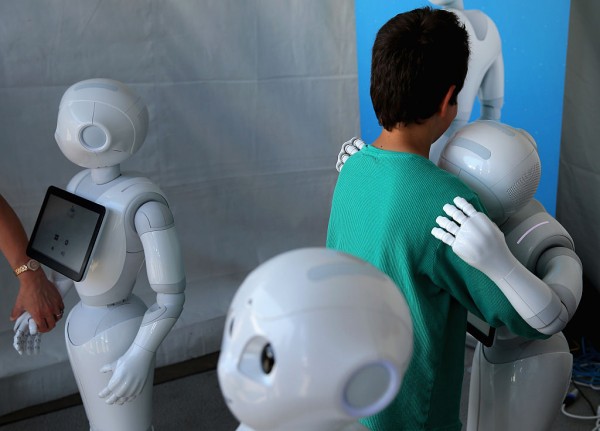Humai Claims Resurrection After Death Possible in 30 Years With Artificial Intelligence
| Daphne Planca | | Dec 01, 2015 11:46 AM EST |
(Photo : Getty Images) Within 30 years, it may be possible to bring dead people to life as a company named Humai is working on a project to transfer the brains of deceased people into an artificial body.
Los Angeles-based tech company Humai has announced its plans of bringing the dead back to life by transplanting their consciousness into a new brain in an artificial body.
Humai's new project dubbed 'Atom and Eve' aims to allow human consciousness to be transferred after a person's death to an artificial body. Artificial intelligence, which is at the heart of this project, has been described as one of the most important discoveries in science.
Like Us on Facebook
Redefining te afterlife is the mission statement of Humai. Artificial intelligence, nanotechnology, and bionics are used to store data about conversational styles, behavioral patterns, thought processes, and information about the body functions of the deceased human from the inside-out.
Multiple sensor technologies where data will be coded are built into an artificial body with the deceased human's brain. This brain will be restored as it matures using cloning technology.
The brain of the dead will be frozen using cryonics technology. When the technology is fully developed and ready, the frozen bone will be embed back but into an artificial body which will be fully capable of living as the deceased used to.
The brain of the deceased will send waves to the body as it used to in the real body of the human being. Actually, the artificial body does not grow old, but the brain does, so the nanotechnology comes in to repair and improve the aging dead brain cells.
Humai Chief Executive Officer Josh Bocanegra believes that the technology will be possible within 30 years. He envisions an artificial intelligence/human mind hybrid, housing the thoughts and behaviors of a deceased person in a new, synthetic body.
Bocanegra is focusing largely on the experience of those left behind. An artificial intelligence 'Soul' is one of his projects that attempts to replicate a person's voice and personality after they have died. He mentioned that in his opinion, tombstones, videos, photos, or even memories are not the best ways to remember someone who has passed. An artificially intelligent version of loved one who can interact with via text and voice is more desirable using software rather than just visiting a grave.
TagsHumai, artificial intelligence death, artificial intelligence news, artificial intelligence human, nanotechnology, bionics, cloning technology, Cryonics
©2015 Chinatopix All rights reserved. Do not reproduce without permission
EDITOR'S PICKS
-

Did the Trump administration just announce plans for a trade war with ‘hostile’ China and Russia?
-

US Senate passes Taiwan travel bill slammed by China
-

As Yan Sihong’s family grieves, here are other Chinese students who went missing abroad. Some have never been found
-

Beijing blasts Western critics who ‘smear China’ with the term sharp power
-

China Envoy Seeks to Defuse Tensions With U.S. as a Trade War Brews
-

Singapore's Deputy PM Provides Bitcoin Vote of Confidence Amid China's Blanket Bans
-

China warns investors over risks in overseas virtual currency trading
-

Chinese government most trustworthy: survey
-

Kashima Antlers On Course For Back-To-Back Titles
MOST POPULAR
LATEST NEWS
Zhou Yongkang: China's Former Security Chief Sentenced to Life in Prison

China's former Chief of the Ministry of Public Security, Zhou Yongkang, has been given a life sentence after he was found guilty of abusing his office, bribery and deliberately ... Full Article
TRENDING STORY

China Pork Prices Expected to Stabilize As The Supplies Recover

Elephone P9000 Smartphone is now on Sale on Amazon India

There's a Big Chance Cliffhangers Won't Still Be Resolved When Grey's Anatomy Season 13 Returns

Supreme Court Ruled on Samsung vs Apple Dispute for Patent Infringement

Microsoft Surface Pro 5 Rumors and Release Date: What is the Latest?










